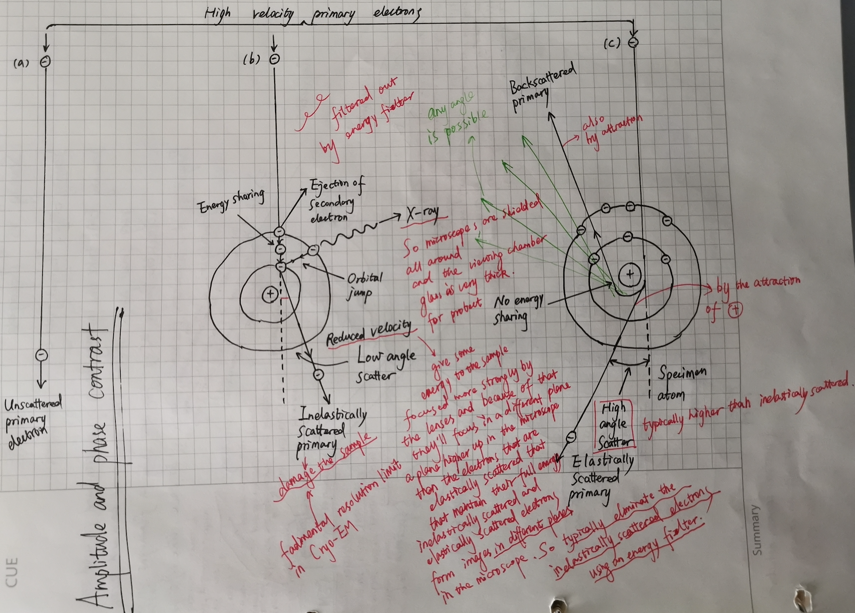Let’s firstly try to analysis the process, during which the single primary electron shot by the high velocity hits at one atom of the sample.

There were three situations:
Situation 1. As seen in the (a). The primary electron is unscattered, and nothing changed.
Situation 2. As seen in the (b). This is the inelastically scattered primary, which is the foundimental resolution limit in Cryo-EM. When interaction happens, energy sharing will happen. This part is very harmful, not only to the sample, but also for the operators. It is because when the electron runs into the electrons of the atoms, it will give the energy to the electrons of the sample and make the orbital jump happen, wwhich will release the X-ray. So microscopes are shielded all around and the viewing chamber glass is very thick for protect. After the interaction of the electrons of the sample, the high velocity primary electrons will reduced velocity. Because it gives some energy to the sample focused more strongly by the lenses and because of that they’ll focus in a different plane, a plane higher up in the microscope than the electrons that maintains their full energy inelastically scattered and elastically scattered electrons from images in different planes in the microscope. So typically eliminate the inelastically scattered electrons using an energy fielter. And this inelastically scattered primary will damage the sample. The characteristic of this electron is the Low Angle Scatter.
Situation 3. As seen in the (c). This part of primary electrons are called the Elastically Scattered Primary which is what we want in the experiment. After the electrons interact with the sample, no energy sharing will happen, and any angle of the scattered electrons will happen. They were interacted mainly by the attraction of the proton of the atoms. Excluding the backscattered primary, the elastically scattered primary is collected, characterised by the High Angle Scatter which is typicaally higher than inelastically scattered primary.